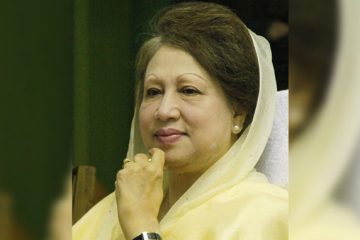Traditional birth control strategy coupled with slow implementation of various related programmes by the Directorate General of Family Planning (DGFP) has failed to control birth rate in the country.
The government is yet to achieve the target of lowering the birth rate to 2.2 per cent despite its 29-year effort.
According to a study of Bangladesh Bureau of Statistics last year, the total population of the country is now 14.45 crore and the growth rate is 1.39 per cent. If the present rate continues, the population will be doubled within next 50 years.
Sources in the DGFP says, around 55 per cent of the countrymen are adopting family planning system currently. But the dropout percentage is 44. That is why the growth of population cannot be controlled, it says.
They said 5.7 per cent female are using permanent family planning system while 8.6 per cent long-term system. On the other hand, only 5.2 per cent male are adopting the long-term system. But the most alarming news is that only 38 percent girls aged between 15 and 19 are adopting the family planning system.
The pregnancy rate among the poor and very educated group is higher than others. Use of birth control pill and injection has been increased in last two decades but the long-term adoption system has not become popular till now.
A study of National Institute of Population Research and Training (Niport) said Bangladesh is facing massive bureaucratic tangle for purchasing birth control products from the international market. It takes more than 18 months to purchase birth control products required for 2 years.
Allegations are there against field level family planning officers that they are not skilled enough to convey the accurate information of family planning system and very often they fail to provide birth control products to the people in the remote areas.
According to Niport, field level family planning officers had reached at least 43 per cent of houses across the country during 1993-94. But they visited only 16 per cent houses across the country in 2007.
Prof AKM Nurun Nabi of Population Science Department of Dhaka University said that it seems to be difficult to address the problem with existing family planning programmes. The government should modernise the programmes for controlling growth rate in the country, he said.
“Around 18 to 20 lakh people are being added to our population every year despite the existence of family planning programmes for the last 29 years. It is really alarming for us,” he added.
He emphasised creating mass awareness about the adverse effect of overflow population and specific direction from the policy making level to control birth rate growth.
Talking to The Daily Star, Abdul Kayyum, Director General of DGFP, said, “We are working hard to lower the rate of population growth to 2.2 percent by 2011. We have given top most priority on encouraging people to adopt permanent and long term family planning system.”
He also admitted shortage of field level family planning officers. “We have proposed the Health Ministry for recruiting more manpower at the field level. Now it is under the consideration of the ministry,” he added.
The DGFP and Niport reports showed the highest growth rate in Sylhet (3.7 per cent) and Chittagong (3.2 per cent).




















